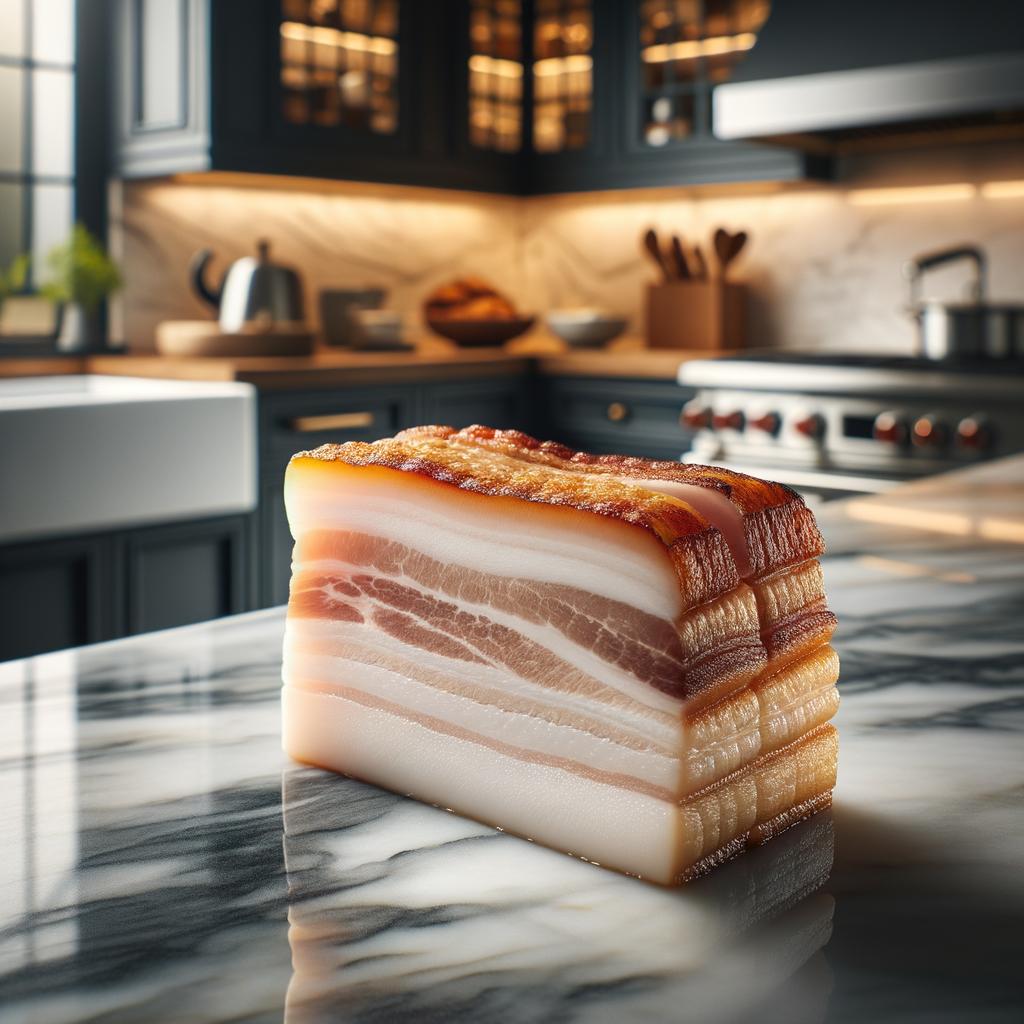Pork Belly

Description
Pork belly, a sumptuous and tantalizing cut of meat, is the epitome of indulgence. It is the fatty, boneless cut of meat from the belly of a pig, presenting a layered appearance of alternating bands of lean meat and luscious fat. The texture of pork belly is a delightful contrast between the tender meat and the crispy layer of fat that covers it when cooked to perfection. The flavor is rich, savory, and full-bodied, offering a satisfying depth that is hard to match. The unique characteristic of pork belly is its high fat content, which, when cooked slowly, renders into the meat, providing a mouthwatering juiciness that sets it apart from other cuts of pork.
Primary Uses
Pork belly is a versatile ingredient that finds its place in a multitude of cuisines around the world. It is often slow-cooked or braised to render the fat and tenderize the meat, resulting in a melt-in-your-mouth delicacy. In Chinese cuisine, it is used in the famous dish 'Dong Po Pork', while in Korean cuisine, it is grilled to make 'Samgyeopsal'. In the United States, it's commonly used for making bacon. Beyond its culinary uses, pork belly also holds cultural significance in many Asian countries, where it is used in offerings and ceremonies.
History
The history of pork belly is as rich as its flavor. It has been a staple in Asian cuisine for centuries, with evidence of its use dating back to the Zhou Dynasty in China. In the West, its popularity soared in the 20th century with the rise of bacon. The romantic aspect of its history lies in the age-old techniques of curing and smoking, which were used to preserve the meat before refrigeration. Over time, these techniques have evolved into an art form, contributing to the unique flavor and texture of pork belly. There's an old myth in Korea that consuming pork belly can cure a hangover, making it a common part of post-celebration meals.
Nutritional Information
Despite its indulgent nature, pork belly does offer some nutritional benefits. It is a good source of protein, vitamins, and minerals, including vitamin B6, thiamin, niacin, phosphorus, and selenium. However, due to its high fat content, it is also high in calories and saturated fat. Therefore, while it can be part of a balanced diet, it should be consumed in moderation. Compared to leaner cuts of pork, pork belly has a higher calorie count and fat content, but it also offers a richer taste and texture.

